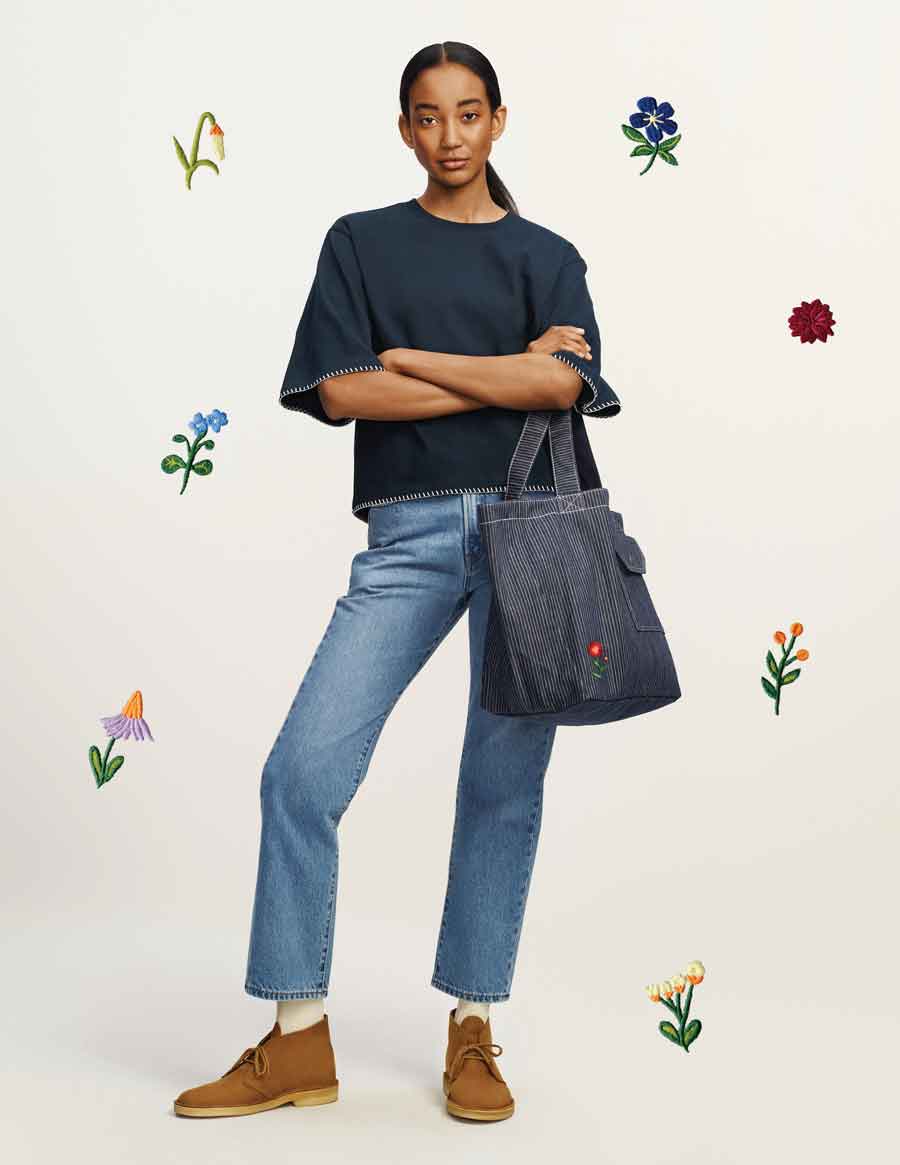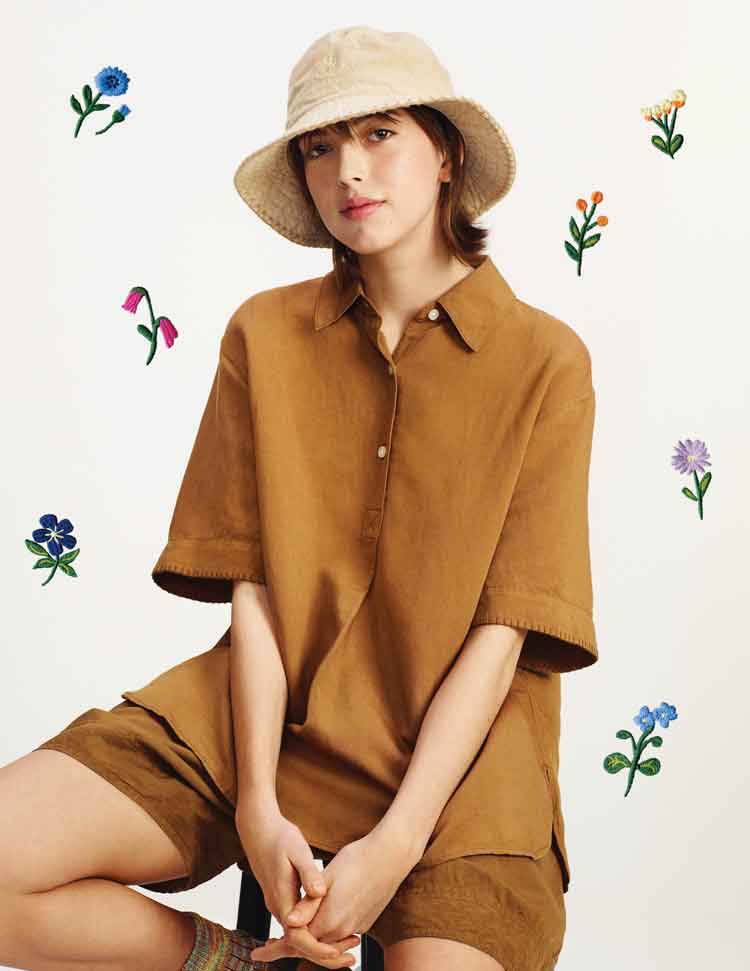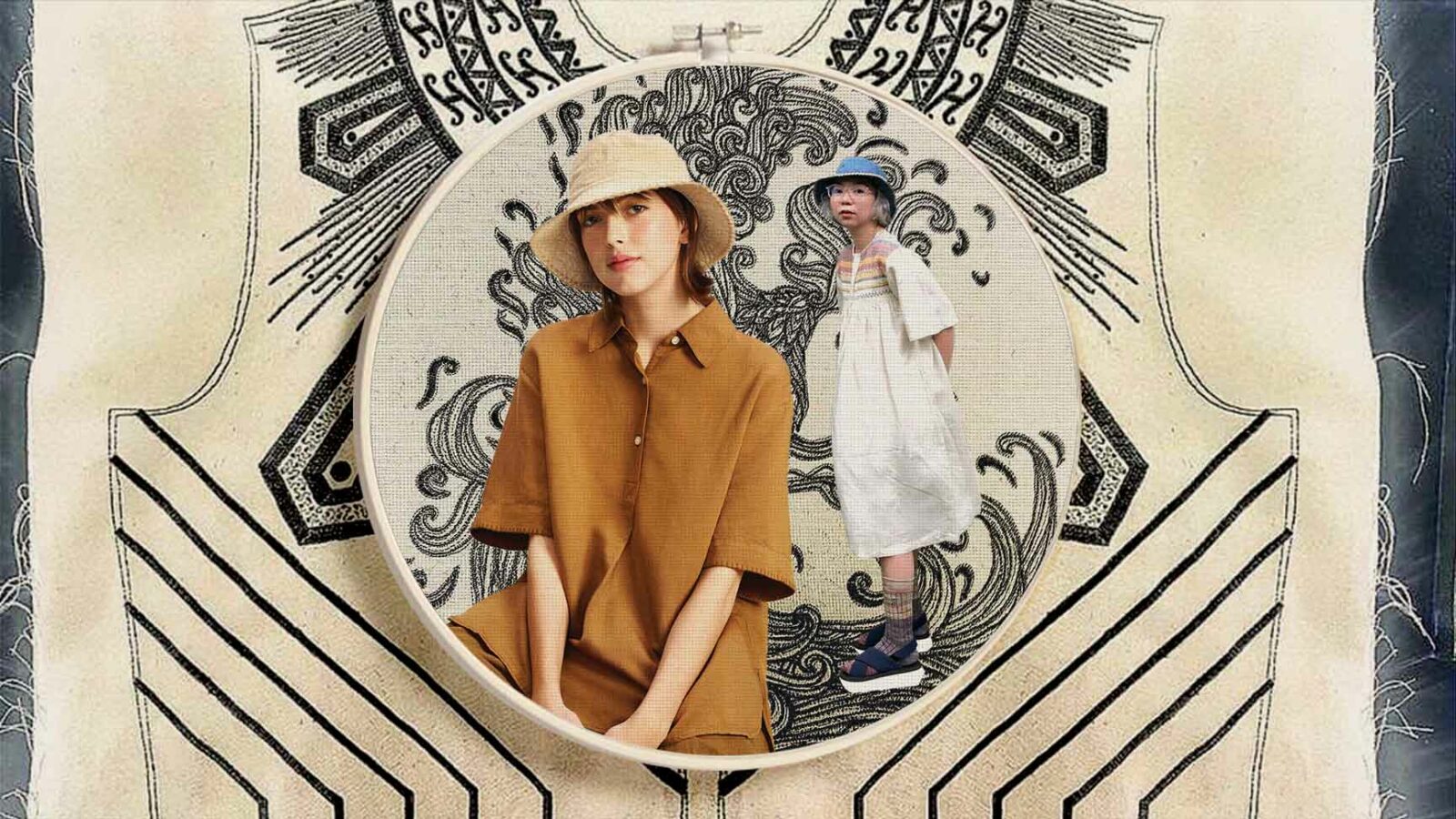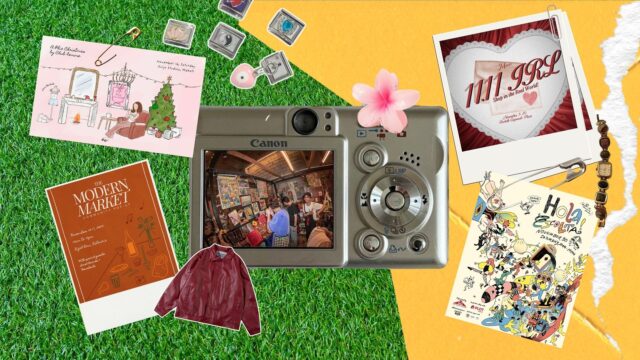Inspired by the graces of our grandmothers, embroidery is getting a well-deserved resurgence with Filipino designers exploring and experimenting with the delicate and dainty detailing.
“Embroidery is therapeutic. It takes your tensions, so it transports you somewhere else,” says Filipino designer, Gabbie Sarenas, as she carefully threads a few strands of colors on a sun-soaked stretch of canvas in thoughtful succession. “For me, embroidery is like writing. Besides bringing your own unique touch to the textile, it adds value of the hands. Hands are culture—it can create and obliterate, it is powerful. Wonderful, charming, and endearing, embroidery has been used since time immemorial, from self-expression to mending. You can say it is like writing stories—a love letter to the Philippines as we always say.”
While it has long fascinated fashion, lending its charming and winsome qualities to style statements over the years, embroidery still hasn’t quite shaken off the reputation of it being a geriatric staple. Not that it is racing to do so, especially since it is because of the persistence of pioneers from generations past that the fine art of embroidery still endures to this day.
“I’m sure people either remembers their titas, lolas, or moms doing embroidery and other nakaka-old na skills like crochet and knitting,” begins Santi Obcena, another Filipino designer who has since exercised a focus on embroidery details on his already feisty and feminine aesthetic. “I learned how to sew from my lola, and now her skill has been passed on to me, a skill that I happily teach to anyone who wants to learn how to sew. Embroidery, as with sewing, is also personal way of telling one’s stories. Every time the needle goes through the fabric with thread and locks a stitch in place, it is a creator immortalizing a gesture or an idea in their own way.”
Related: THINGS THAT P-POP MADE EVEN COOLER: THE BARONG
Will Lola And JW Anderson Approve?
From the baul of lola to the brilliant mind of JW Anderson, the nostalgic charm of embroidery holds a certain reverence in terms of technique, as it ultimately stitches the past to the present. More than just an aesthetic, it stands out for its compelling attention to detail. “Embroidery is a movement that complements not only self-expression, but of sustainability,” says Gabbie Sarenas, whose entire ethos as a Filipino designer is held together by the mindful approach to silhouette, sentiment, and sustainability. “It has the power to prolong the lifespan of your clothing or textile accessories, a skill that has been used for the longest time in cultures with their articles of clothing. Plus, the feeling that embroidery gives is just unparalleled—the warmth, the joy, the nostalgia, the hug! It’s also an emotion that we all need from time to time.”
Whether it is through thoroughly textured bib tops to the words made tangible and permanent on local textiles, there is always an element of kind consideration that flows through her garments, it is this kind consideration that makes her work parallel to the spring collection of JW Anderson for Uniqlo. With a penchant for the artisanal and homespun, JW Anderson essays his love craftsmanship and heirloom charm with the technical ease of Uniqlo in a selection of pieces that are meant to evoke hope, new beginnings, and brighter days.




In this moment of optimism, embroidery is not only introduced, but also integrated into the lives of who get to interface with the fine art. From the playful sense of blanket and satin stitching, as well as of bohemian smocking seamed through the pieces in accents such as t-shirts, blouses, hats, dresses, and skirts, it is the stitch work that really shines through the linen blends and slub cotton. “It is an ingenious way to make the piece feel at home and to give it the warmth that will be passed on to its future owner,” details Gabbie Sarenas as runs her fingers over the different types of pink stitching she uses in embroidery.
Man vs. Machine
Defraying its perceived sluggish relevance, embroidery has enjoyed a steady resurgence from young designers exploring and experimenting with the delicate and dainty detail. With its slow and steady reacquainting in both the mending and decorative point-of-view, more people are appreciating this old-school technique beyond the requirements of Home Economics classes. “As a designer and a brand that champions handwork, we keep embroidery relevant with a balance of consistency and innovation,” shares Gabbie Sarenas. “Bringing awareness to the craft keeps people curious and interested. It’s always that push that it needs—being persistent and giving more than what is expected.”
Concurring to this, Santi Obcena furthers, “The key to any craft, skill, and technique being forgotten is to share it. Like stories, we pass it on for the next generation.” Admitting to still learning the process, especially translating that hand-stitched skill to machine embroidery, the Filipino designer describes his deep-dive into embroidery getting to tell his story with another dimension.
“Coupled with greater patience and level of meticulousness, it is a circus act which has taken me more than year to fully understand and execute,” he says. “Whether it be hand or machine embroidery, both methods have their own pros and cons like patience, time, specific techniques and design limitations, but they both bring a calming and cathartic feeling to the embroiderer. Doing hand embroidery is similar to crocheting, knitting or cross stitch. That quietness in the action. While most machine embroiderers like me find the humming and complicated choreography soothing.”
Celebrating The Art Of Embroidery
It is this very same contention that Gabbie Sarenas compels to celebrate the connection of community through. “The virtue of patience is always practiced and critical thinking is always practiced. The principle of problem solving is near and dear to our hearts as we aim to create more than just pretty thing,” she says. “It is the very essence of fashion design that we make things that are utilized and at the same time making a mark with how is it visually, emotionally, and psychologically.”
Winding down with the final stitches and knotting it in place, Gabbie Sarenas reminds us to ditch the intimidation of perfection. After all, no two embroideries will ever be alike, especially when worked on by hand. “Don’t be pressured in making this art work. Relax and have fun. Listen to some music, drink some coffee or tea,” she says reassuringly. “Embroidery takes a lot of time, but don’t be discouraged. Art takes time. You can always take a breather…No pressure as you can always come back to your work of art. I promise that your patience will be rewarded.”
CONTINUE READING: THESE YOUNG FILIPINO ARTISTS PROVE THAT ART IS MORE THAN JUST A PRETTY PICTURE





